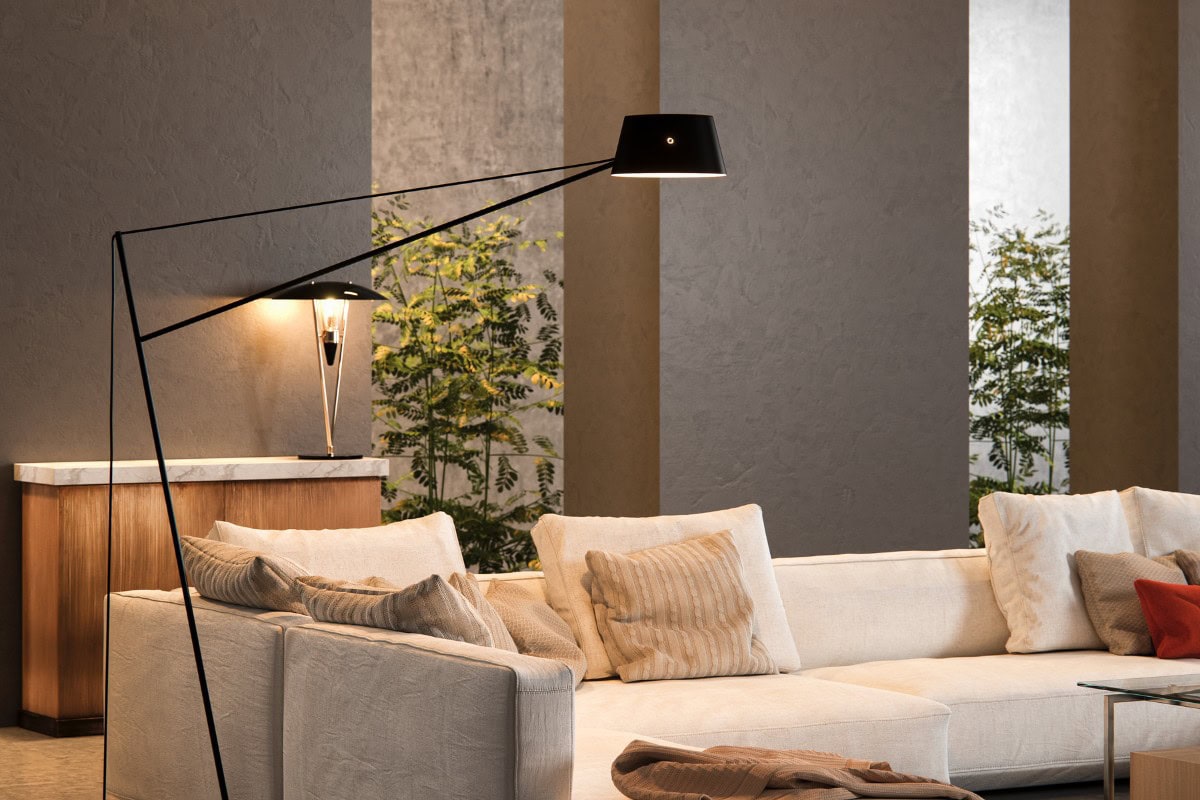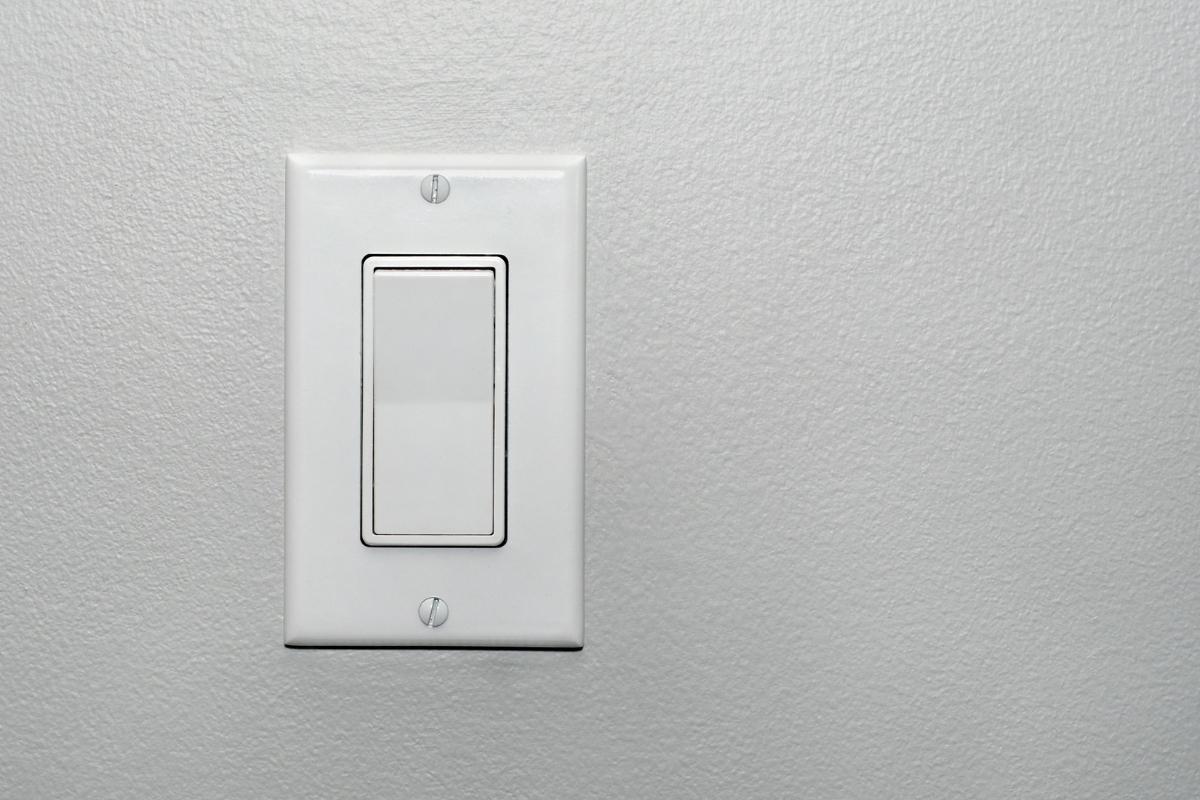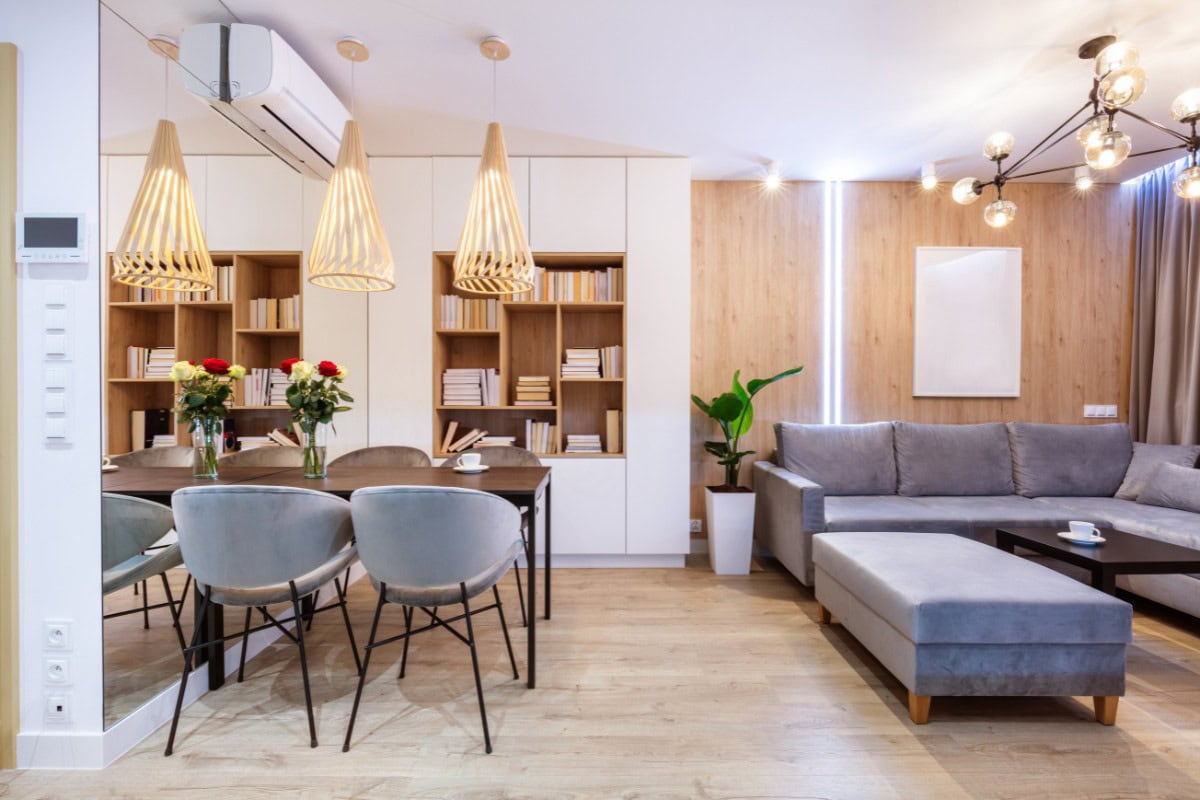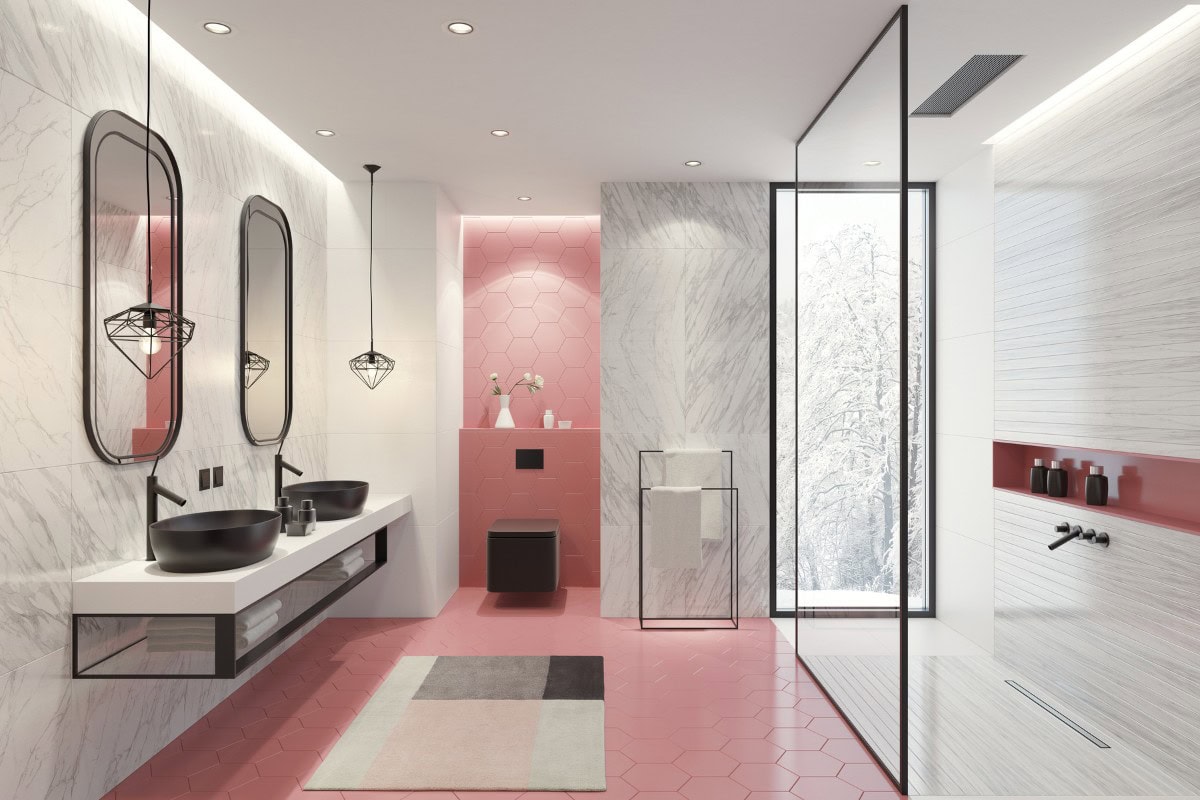Each indoor space will present its own unique set of lighting challenges. Perhaps there will be dark corners to contend with, excessive glare, or even complicated room layouts. One of the more common hurdles encountered by homeowners and apartment renters alike is overly dark interior spaces.
It is very easy for us to take for granted the fact that we can illuminate our homes with the flip of a switch. Yet, we begin to appreciate how much work goes into interior lighting only when we try to figure it out for ourselves. Being presented with a room that either does not or cannot accommodate windows and overhead lighting represents a particularly frustrating puzzle, but you may be surprised to discover just how frequently this exact problem comes up.
Often, this situation is encountered by renters who are not permitted to install any permanent fixtures, and that’s to say nothing of tinkering with the electrical wiring. Other times, older homes tend to have a particularly shadowy room here or there which isn’t wired to easily accept a ceiling fixture. Although, even new construction is not immune to less-than-ideal lighting layouts.
So, what does a DIY enthusiast do in a situation like this? It’s no secret that even the bravest of handymen think twice before punching holes in their ceiling or rearranging electrical components. But is that your only choice?
Luckily, you have a number of options available to you when it comes to illuminating dim rooms in your home. Here are some universal suggestions which can help you plan a better lighting strategy, and bring your underutilized spaces out of the dark.
Floor Lamps
Floor lamps are a great option because they offer versatility and a wide range of styles. Somewhere out there lies the perfect floor lamp to match your decorative theme while also adding some much-needed light to your room.
Perhaps the best aspect of floor lamps is their tendency to be tall and thin, meaning you do not have to devote much floor space to them. This can be especially helpful in tight, cramped spaces where square footage is at an absolute premium.
A few important questions to consider when selecting your floor lamps:
Will Floor Lamps Be Your Main Source of Light in the Room
If so, make sure you select an appropriate number of lamps and go with light bulbs that provide enough lumens, as well as a comfortable light temperature for the room. Most people prefer around 800 lumens for interior lighting and a light temperature of around 2700K – 3000K (this being around the brightness and color of an incandescent, 60-watt bulb.)
Can These Floor Lamps Be Wired to a Wall Switch or a Dimmer
Fumbling around in the dark for a switch on a floor lamp is never ideal. Make things easier on yourself by ensuring that your space can be illuminated quickly and easily. Also, don’t forget that there are wireless wall switches available that can be paired with the new lamps you place in your room. These can be especially convenient in rooms that are not already wired with light switches.
Are the Lampshades Helping or Hurting the Situation
Lampshades may seem completely decorative, but they actually have a lot to do with how light is distributed in your room. Heavily shaded lamps may still leave a room too dim, while inadequately shaded lamps may lead to glare or harsh shadows. Try some different styles of lampshade to find out which works best for your home.
Can These Lamps Multitask
Three-way light bulbs add a lot of versatility to a floor lamp setup. The light level in the room can be raised or lowered by turning the switch on the lamp (or remote), providing a comfortable level of lighting for several different tasks. Also, you can look for something like a torchiere floor lamp with an adjustable swing arm at about the three-quarter mark. The swing arm lamp can be positioned and used as a reading lamp or task lighting.
Once you have found floor lamps that meet all of your requirements, they’re very easy to place strategically in a room. Floor lamps make an excellent source of ambient light and, in some cases, can provide additional task lighting.
Lighting Ideas Without Wiring
To take advantage of all the possibilities of your lighting setup, consider these options for easy installation.
Remote-Control Light Bulb
Plug a remote-control light bulb into a light fixture and simply use the remote as the switch. Consider using adhesive backing and sticking it to the wall. Finding a remote that won’t stick out like a sore thumb on your wall will be the difficult part.
Smart Bulbs
Most smart bulbs will come with a ton of great features but in this case decent and accessible lighting should be a priority. The issue that stands out is that these are mostly controlled from your phone/mobile device, so it won’t be an easy flick-a-switch for you and your guests. To mitigate this, you could program these to turn on/off on a schedule, configure If This, Then That app recipes, or install a motion sensor.
Smart Plugs
In the same vein as smart bulbs, except you turn your light fixture (floor lamp, table lamp, pendant lamp) into a smart light. The features and limitations are similar to what you can expect from smart bulbs in terms of accessibility.
Strip Lights
If you are feeling particularly creative, you can take advantage of LED strip lights. This is a series of lights connected together in a “tape” which can easily be installed in many different places.
Particularly, bright LED strip lighting works great under cabinets as kitchen task lighting. Or, for a bit of atmosphere, install strip lights along the kick panel between your lower cabinets and the floor.
Strip lights also work very well along crown molding, above a doorway frame, around the top of a hutch or china cabinet, on a fireplace mantle, or anywhere else where it might be awkward to fit a lamp or traditional lighting fixture.
Besides being versatile and easy to install, LED strip lights also have the advantage of consuming very little electricity. The combination of high efficiency and smart technology (some strip lighting can change colors or run programmable sequences) means that we will probably be seeing more of this option in the very near future.
LED Skylights
LED skylights are an interesting option for those trying to work around old fluorescent ceiling fixtures. These are bright LED lights that can very easily be wired into the existing structure of an overhead fluorescent light. The old housing can be replaced by a large flat panel, which mimics the look and feel of a skylight. Pair that with the daylight-bright LEDs, and you can create the illusion of a true skylight in your room.
This type of lighting can be especially welcome in dim kitchens, providing adequate task lighting and bringing the feeling of windows into a windowless room. Not to mention the fact that LED technology has advanced to the point where a well-placed overhead LED fixture could illuminate a room much better and more efficiently than an older fluorescent fixture could have.
Luminous Sky Ceilings and Virtual Windows
Those of you who are both truly ambitious and truly in love with what LED technology can accomplish might want to consider what is known as a luminous sky ceiling or a virtual window.
You may have seen some mention of these in news stories, but they are exactly what they sound like: virtual ceilings or window panels that reflect clear blue sky, daylight, and everything else you would expect to see through a real skylight or window on a brilliantly sunny day. Some medical offices and restaurants were early adopters of this technology, but it is now beginning to make its way onto the residential consumer market, and people are taking notice.
If you live in a home or apartment that does not have much access to natural daylight, that can begin to take a toll on you mentally and emotionally. A sky ceiling or virtual window is really an LED screen that mimics the daylight and can be used therapeutically. Many hospitals have installed similar features and have seen great results.
This option will definitely be on the more expensive end of things, as only a few companies produce and install such specialized technology. Still, you could wow everyone in your neighborhood by installing a virtual sky in your living room.
Strategic Mirror Placement
Mirrors can be put to very clever use for adding light to a room. It may not be practical (or aesthetically pleasing) to place lamps in each corner of your room, but a mirror placed in just the right way can help reflect and bounce available light around the room, making the space brighter.
No windows in the room? A pair of framed mirrors can create the illusion of windows while also shining some extra light into dark areas.
Mirrors have the added benefit of helping a room seem larger than it is, making them especially popular design choices for small or cramped spaces. And don’t make the mistake of thinking that bathrooms or bedrooms are the only places for mirrors. A well-placed mirror in a kitchen can make a dramatic statement while also brightening up the room, and dimly lit hallways can seem wider and more airy thanks to mirrors.
Uplighting Versus Downlighting
These terms may seem self-explanatory, but there’s a little bit more to it than simply “light shining up, or light shining down.”
Generally speaking, uplighting is provided by sconces, some chandeliers, torchiere floor lamps, etc. These fixtures will project light up toward the ceiling, making uplighting a popular choice for ambient light sources.
Downlighting is usually provided by pendants, reading lights, track lighting, etc. These fixtures shine light down toward the floor or onto a task area such as a countertop or table.
Now, here’s the big secret: you need both all throughout your house.
Sometimes, a room is poorly lit simply because it relies solely on uplighting or downlighting. A room could technically have every square inch of the carpet perfectly illuminated through strategic placement of pendant lights and still seem kind of dark without an uplighting source in the room.
So, when planning out your lighting, make sure that some of your sources focus their light upward while others focus downward. Remember that question earlier about lampshades? Something as simple as swapping out one lampshade for another could change a table lamp or floor lamp from a source of uplighting to downlighting or vice versa. Including both types will help provide more even and uniform illumination throughout the room.
A Few Don’ts
There are some lighting solutions that might seem like a great idea at first but can present problems later on. Here are a few things we recommend avoiding when trying to lighten up a shadowy room.
String Lights
Unless you are looking to brighten up a dorm room or perhaps decorate for a children’s sleepover party, string lights really have no role to play in sophisticated indoor lighting design. In fact, string lights were never really designed for indoor use at all. When most of us think of string lights we think of holiday decorations, outdoor restaurants, or perhaps our own pergola out back. They do not have their light focused in any particular way and are therefore not very helpful as ambient, task, or accent lighting.
There is a bit of an efficiency problem as well. Traditional string lights can be very expensive to run. If you have ever noticed a spike in your electric bill around the holidays, chances are pretty good it was all those string lights causing the extra expense. Also, remember that string lights have a tendency to blow fuses, causing half of the strand to go out at a time.
Stick with LED strip lights if you have your heart set on flexible connected lights. They are more versatile, more energy-efficient, and much more appropriate for interior lighting.
Hanging Cords
A vintage swag lamp might look elegant and structural as a focal point of a room, but that might be the only example of a hanging cord that doesn’t immediately look terrible. Tempting as it might be to simply run cords or wires along your walls and ceiling, it’s a design choice that sticks out like a sore thumb.
Exposed wiring and hanging cords are distracting at best and potentially hazardous at worst. The longer you run a cord, the more opportunities it has to fall, tangle, become unplugged, etc. This is also not a good option for renters or those looking to avoid altering the walls or ceiling, as you will still need to either nail or tack the wires in place and use some type of screws or adhesive to position the light fixtures. If you are affixing lamps or light sources to your walls or ceiling anyway, do it right and make sure the wiring is run properly and not exposed.
Overly dim and dark rooms can be more than just an annoyance. Inadequate lighting can be hazardous, as people are more likely to trip and stumble over things they can’t see. Furthermore, a room that is poorly lit is not ideal for completing any type of task. In other words, a poorly lit kitchen might mean you’re ordering takeout a lot more frequently. A poorly lit living room might mean that you never get around to those books you’ve been meaning to read.
Addressing a lighting issue in your home is also addressing your quality of life. There are many options available to you that do not rely on windows, natural light, or overhead fixtures in order to accomplish your goals. Hopefully, this guide gave you some good ideas to begin planning out your own lighting strategy because a room without adequate light isn’t doing you any favors.
Good luck, and have fun designing your new, more illuminated space.









